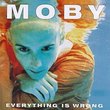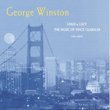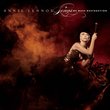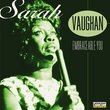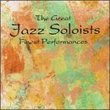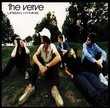| All Artists: Chanticleer Title: Palestrina: Mass 'pro Defunctis', Motets Members Wishing: 0 Total Copies: 0 Label: Elatus/Warner Classics Original Release Date: 1/1/2006 Re-Release Date: 5/18/2006 Album Type: Import Genre: Classical Style: Number of Discs: 1 SwapaCD Credits: 1 UPC: 809274961921 |
Search - Chanticleer :: Palestrina: Mass 'pro Defunctis', Motets
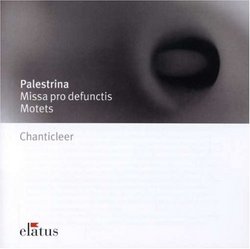 | Chanticleer Palestrina: Mass 'pro Defunctis', Motets Genre: Classical
|
Larger Image |
CD DetailsSimilarly Requested CDs
|
CD ReviewsA voice teacher and early music fan George Peabody | Planet Earth | 01/16/2007 (5 out of 5 stars) "'THE SONG OF SONGS' I DO REVERE; ESPECIALLY WHEN SUNG BY CHANTICLEER
From the moment when, at the age of eleven, Giovanno Pierluigi da Palestrina became a choir boy at Santa Maria Maggiore in Rome, until he died, the church was a permanent backdrop for the drama of his life,-now it was the Sistine chapel, now a simple country place of worship, but always a house of God. Palestrina's compositions display purity and clarity, comparative brevity and simplicity; polyphony used with judicious reserve, the banishing of secular elements from his music. The genre of the "Missa pro defunctis" (requiem mass) , so-called because it begins with the plainchant 'Requiem aeternam' (Eternal rest), flourished during Palestrina's lifetime. His source for the melodic materials of his mass highlights the relationship between his melodic idiom and plainchant in a way similar to many his motets. Without exception, he adapts the most prominant melodies from the plainchants for the Requiem Mass, offering each imitatively through the five-voice texture so that the same motives are heard in overlapping succession from voice to voice. The "Pange lingua", a hymn setting with its odd-numbered stanzas performed polyphonically and it's even ones in plainchant, was sung at the feast of Corpus Christi throughout Catholicism. Palestrina composed 'Gaude Barbara' for his patron Duke Guglielmo Gonzaga. It is a motet commemorating the virtues of St. Barbara. "O bone Jesu", a tender supplication to Christ, recalls us briefly to contemplation of death. The "Song of Songs" is an allegory of Christ's intimacy with the one 'true' (Roman) Church. In this motet Palestrina adopts a more madrigalian idiom, but nothing could be more appropriate for these words that remain, at some irreducible level, settings of love poetry. Chanticleer is a full-time professional 'a cappella' ensemble based in the U.S., and has developed a remarkable reputation for its interpretation of vocal literature, from Renaissance to jazz. The ensemble takes its name from the rooster in Chaucer's Canturbury Tales.There are (on this disc) five countertenors, three tenors, two baritones, one bass-baritone and one bass. Their rendition of the Palestrina music is perfection! For those of you who enjoy this early music composer, this listening experience would be truly memorable." |

 Track Listings (12) - Disc #1
Track Listings (12) - Disc #1